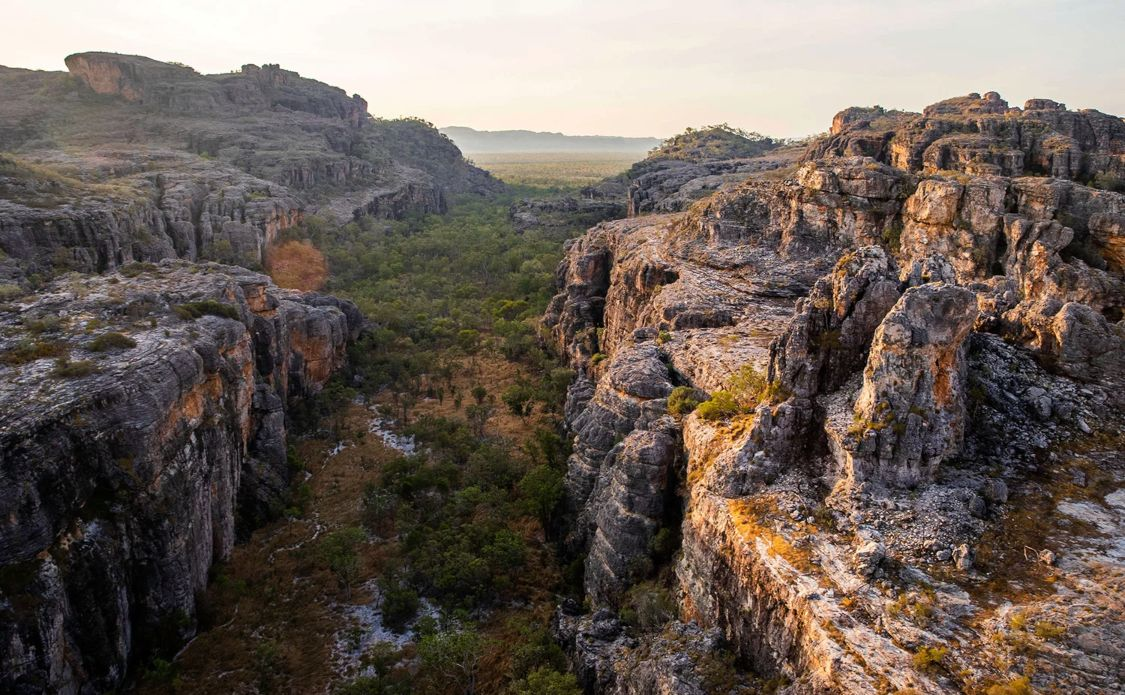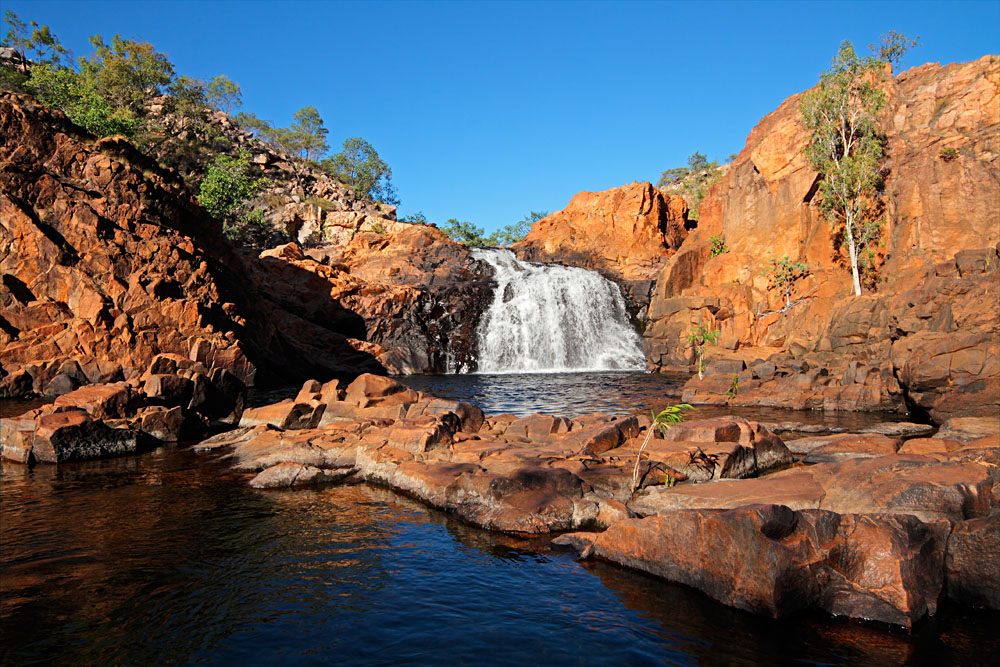Encompassing an area of over 19,000 square kilometers, Kakadu National Park is a majestic tapestry of biodiverse wetlands, striking rocky escarpments, and ancient Aboriginal rock art. The park offers an array of must-see attractions for any nature enthusiast or cultural aficionado. From a day trip from Darwin to Kakadu, visitors can witness breathtaking landscapes, rich wildlife, and millennia-old indigenous art, providing a unique insight into Australia’s heartland. In this guide, we’ll uncover the top sights and experiences that make Kakadu an indispensable entry on any adventurer’s bucket list.
The Ancient Beauty of Kakadu’s Rock Art

An exploration of Kakadu is incomplete without marveling at its ancient rock art, one of the oldest records of human culture on Earth. Thought to date back some 20,000 years, these paintings offer a connection to the lives, beliefs, and rich history of the park’s original inhabitants.
Ubirr Rock Art: A Window Into the Past
Ubirr is one of the most visited sites within the park, where visitors can immerse themselves in a truly open-air museum. The art here depicts stories of the Dreamtime, traditional bush foods, and early contact with European explorers. The best times to visit Ubirr are during the cooler parts of the day, especially at dusk when the rock faces are beautifully illuminated by the setting sun.
Nourlangie Rock: Art and Legends
Another gem of Kakadu, Nourlangie Rock, proudly showcases an extensive shelter that served as a canvas for thousands of years. It tells stories through the images of the Creation Ancestors and the world they shaped. Guided tours are available, offering deeper insight into the area’s spiritual significance and traditional lore.
Kakadu’s Diverse Wildlife and Where to Find It
Kakadu National Park is a haven for wildlife enthusiasts, boasting an ecosystem that supports thousands of plant species, birds, reptiles, and mammals. The park’s diverse habitats range from monsoon rainforests to expansive wetlands, providing homes for numerous endemic species.
Biodiversity: Flora and Fauna
The park is recognized as a biodiversity hotspot. Conservation efforts aim to protect this delicate balance while allowing visitors to witness nature’s splendor. Sightings of saltwater crocodiles, wallabies, and the iconic Jabiru are common, making each visit a thrilling experience.
The Best Spots for Wildlife Watching
Kakadu is rife with areas perfect for spotting an array of bird and animal life.
- Yellow Water Billabong: A Birdwatcher’s Paradise
- South Alligator River: A Journey Through Wetlands
As you glide through the water on a guided cruise, you’ll be greeted by the sights and sounds of a bustling avian world. The billabong is particularly popular for sightings of jacanas, kingfishers, and the elusive Brolga.
Taking you deep into the mangrove-fringed channels, this region is teeming with crocodiles, buffaloes, and a plethora of bird species. A boat cruise here is a must for those wanting a closer look at Kakadu’s complex water systems and their inhabitants.
The Spectacular Landscapes of Kakadu National Park
Kakadu’s dramatic landscape is punctuated by a series of waterfalls and serene waterholes, providing the perfect retreat from the tropical heat and an opportunity for some unforgettable swimming experiences.
Jim Jim Falls – Kakadu’s Monolithic Waterfall
Tucked away in the heart of the park, Jim Jim Falls is a seasonal waterfall that cascades over 150 meters straight down into a deep plunge pool. Despite the challenging drive and walk to access it, the view of this massive waterfall is a rewarding spectacle not to be missed during the wet season when it’s at its full roaring capacity.
Twin Falls: The Park’s Picturesque Gem
To immerse yourself in the beauty of Kakadu’s landscapes, a visit to Twin Falls is a must. Accessible via a boat shuttle followed by a boardwalk, this idyllic spot is surrounded by pristine sandy beaches and lush vegetation.
Warding Off the Heat at Gunlom Plunge Pool
Among Kakadu’s natural wonders is Gunlom, a picturesque plunge pool at the base of a waterfall, fringed by rocky outcrops and providing a panoramic vista of the surrounding countryside. If you’re ready for a hike, the walk to the top awards swimmers with a breathtaking natural infinity pool.
Cultural Experiences in Kakadu
The rich tapestry of Kakadu extends beyond its natural beauty to encompass the vibrant culture of the Bininj/Mungguy people, who have called the land home for millennia.
Warradjan Aboriginal Cultural Centre
This center offers visitors a unique opportunity to gain an understanding of the cultural practices, traditions, and history of the indigenous people. Through a variety of exhibits, you can learn about the park’s diverse landscapes, the foods gathered by traditional owners, and more.
| Tour Type | Description | Duration | Availability |
|---|---|---|---|
| Rock Art Tour | A guided walk showcasing the ancient art of Ubirr and Nourlangie. | 1-2 hours | Dry Season |
| Eco Walk | Explore the park’s flora and fauna alongside an expert ranger. | 2-3 hours | All Year Round |
| Cultural Workshop | Hands-on experiences in traditional practices, such as weaving or painting. | Varies | Dry Season |
Essential Tips for Planning Your Kakadu Adventure
A day trip from Darwin to Kakadu can be a packed adventure, but for a more immersive experience, proper planning is key. Here are a few essential tips to ensure you make the most of your time in this extraordinary national park.
The dry season (from May to October) offers the best accessibility to pathways and waterfalls, and you’re less likely to be impeded by heavy rains or flooding. It is also the peak season for wildlife viewing as animals congregate around the shrinking water sources.
Before you enter the park, you’ll need to obtain a pass which contributes to the conservation efforts and allows unlimited entry over multiple days. You can purchase this pass online or at certain visitor centres.
Lastly, options for staying overnight range from campsites to lodges, catering to different comfort levels and budgets. Always remember to respect the natural environment, following the ‘leave no trace’ principle to preserve the park for future generations.
Conclusion
Kakadu National Park is a trove of natural brilliance and cultural wealth. From the ancient calls of its rock art to the symphony of bird songs at dusk, the park offers a unique serenade to those who traverse its lands. By planning carefully and traveling thoughtfully, visitors can deeply connect with the spirit of Kakadu – a jewel in the crown of Australia’s natural heritage.
FAQs
- What is the best time of year to visit Kakadu National Park for optimal wildlife viewing?
- The dry season (May to October) is ideal for wildlife viewing, as animals gather at watering holes, making them easier to spot.
- Are there any tours available that provide deeper insight into the indigenous culture and history of Kakadu?
- Yes, ranger-guided tours, Aboriginal cultural tours, and experiences at the Warradjan Cultural Centre offer immersive cultural insights.
- Can you swim in the waterfalls and pools at Kakadu National Park?
- Some waterfalls and pools are safe for swimming, specifically Gunlom Plunge Pool and designated areas at Twin Falls. Always obey safety signs and seasonal closures.
- Do I need a permit to enter Kakadu National Park?
- All visitors require a park pass to enter Kakadu, which helps with conservation efforts and can be purchased online or at visitor centres.
- What is the significance of Kakadu’s rock art, and why is it a must-see?
- The rock art of Kakadu is of great cultural and historical significance, offering a glimpse into the spiritual and daily life of the Indigenous people who have lived on the land for tens of thousands of years.
